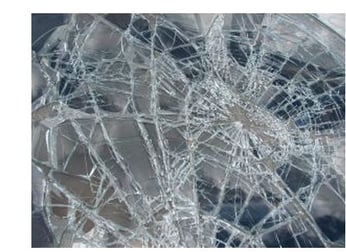JIM DUDEK
Relationship Manager at HNI
 When it comes to distracted driving accidents, rear-end collisions are the most common crashes on the road.
When it comes to distracted driving accidents, rear-end collisions are the most common crashes on the road.
Rear-end collisions rank at the top of accident types with respect to cost (insurance claims), injury and fatality rate, and frequency. Trucking firms are especially aware of rear-end collisions, seeing as how their employees' "offices" (aka tractor-trailers) are susceptible to distracted driving accidents.
While it seems like there are more distractions for commercial and noncommercial drivers every day (buzzing phones, increased traffic congestion, etc.), the good news is that all drivers can manage these distractions and reduce the risk of distracted driving accidents. Leaders of transportation companies can share the following tactics with their truck drivers to prevent crashes, reduce or eliminate claims, and keep the road safe for everyone:
1.) Know the Enemy: 3 Types of Distractions
There are 3 main types of distractions drivers face:
-
Visual distractions.
This includes taking your eyes off the road to look at wildlife, construction, people, advertisements (billboards/signs), etc.
-
Manual distractions.
This includes taking your hands off the wheel to eat, use a phone, reach for items, use vehicle technology, etc.
-
Cognitive distractions.
This includes taking your mind off driving because of stress, impatience, lack of concentration, fatigue, etc.
Knowing distraction types will help your drivers recognize when they're doing something unsafe behind the wheel — and know it's time to make a correction!
2.) Take the Phone Off the Hook
Consider asking drivers to turn off and/or lock up their cell phones in a glove box until they reach a destination. A voicemail message can let callers know that transit time is no-talk time and calls will be returned at the next safe stop.
3.) Hands-Free is the Way to Be
If your drivers must have access to their phones, encourage them to utilize hands-free technology whenever possible, eliminating manual distractions discussed above. Calls that can't wait can be made using hands-free Bluetooth technology. What's more, hands-free phones are the law for CMV drivers. Check out this blog post on compliant mobile telephones for information.
4.) Only Wheels Should Roll Around
Loose items shifting around the cabin — food, gear, etc. — could become visual, manual, and cognitive distractions. Lock down and put away any stuff that could be tempting to reach for while driving.
5.) Get Comfortable Before the Engine Starts
Drivers should run through a checklist of physical comfort as they prepare to hit the road. If they're likely to get hungry during the drive, they should eat now. If they're likely to get too hot or too cold, they should layer appropriately right away (instead of struggling to strip down or bundle up from behind the steering wheel).
6.) Set Up Technology in Advance
When using electronic or technological devices such as navigation, stereo, or vehicle controls, drivers should set them prior to driving. If they need to readjust tech, ask them to pull over in a safe area.
7.) Get Your Head Right
This takes some courage, but implore your drivers to admit if they're going through a difficult situation that doesn't allow them to mentally focus on their demanding driving demands. The cost of taking time to get a clear head before getting behind the wheel is negligible compared with an insurance claim. On a similar note, insist that drivers are well-rested and not fatigued, and that you expect them to pull off at the nearest exit or wayside to rest up when they need it. If you offer an employee assistance program (EAP), periodically remind your drivers that it's a benefit that could help them and their families through tough times.
8.) Anticipate Obstacles and Don't Rush
Teach drivers to allow themselves enough time to get to destinations on time and safely. That means leaving early enough to account for potential slowdowns from construction, accidents, congestion, weather, etc.
The common theme behind this tactical guide is that distracted driving accidents are preventable — but only if you and your truck drivers commit to being proactive!
How do you talk to drivers about avoiding distracted driving accidents? Do you have specific tips for avoiding nasty rear-end collisions? Please share in comments!
Related Posts:
Avoiding a Big Rear End: Collisions Come with Hefty Cost5 Things Drivers Never Should Do at the Scene of an Accident
Tracy Morgan Crash Shines Spotlight on Culture of Safety in Trucking
How the Best Drivers Respond at the Scene of an Accident
.png?width=69&height=53&name=Acrisure%20Logo%20(White%20Horizontal).png)

